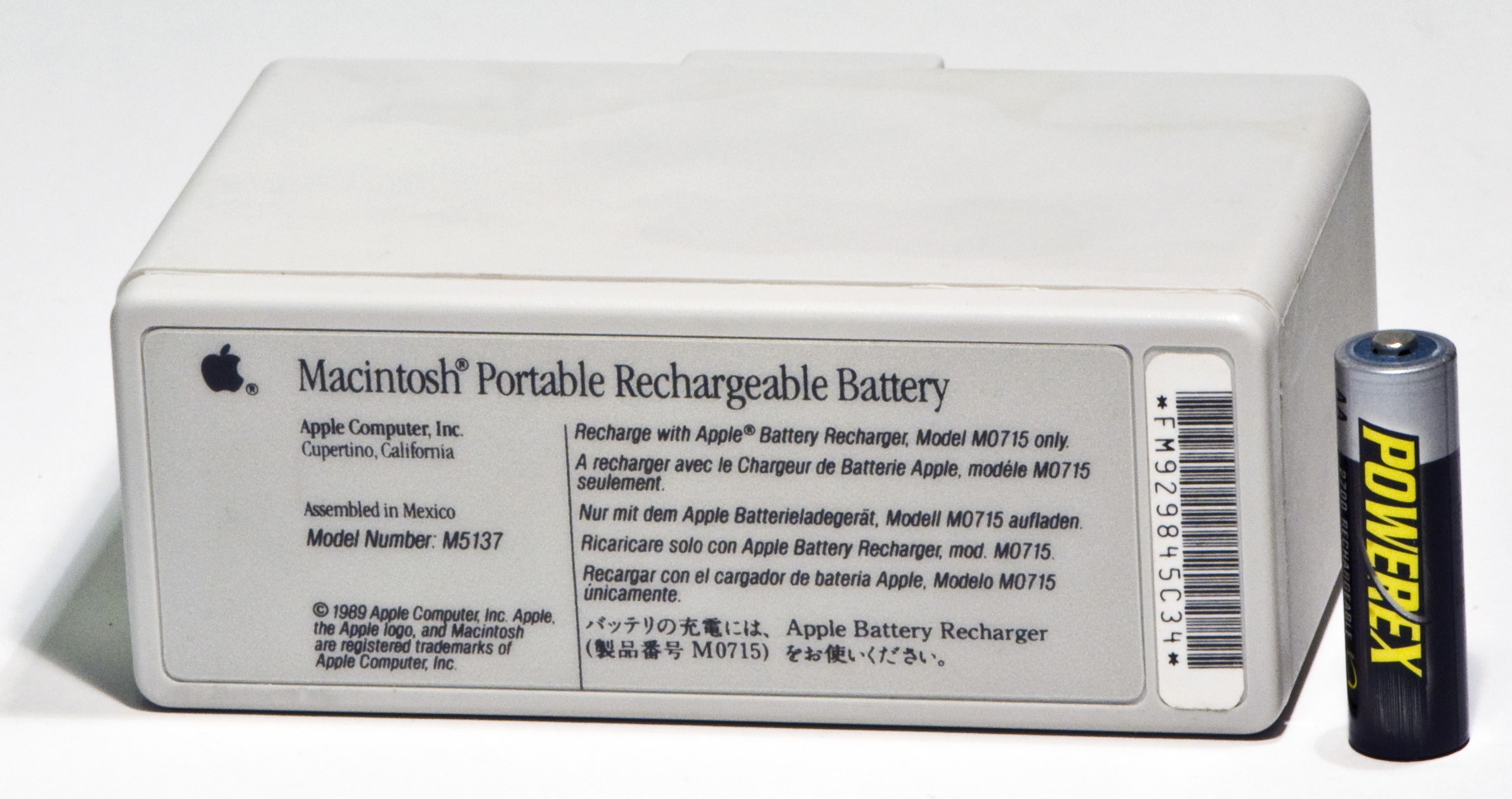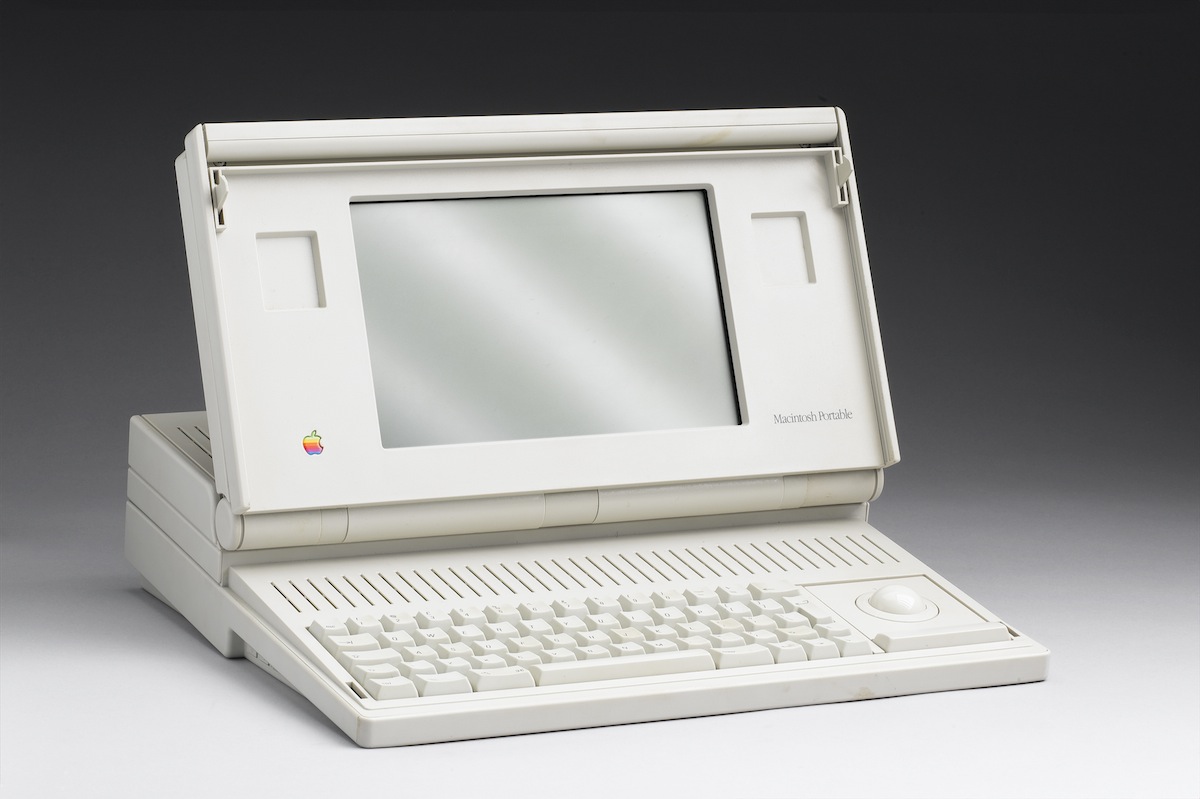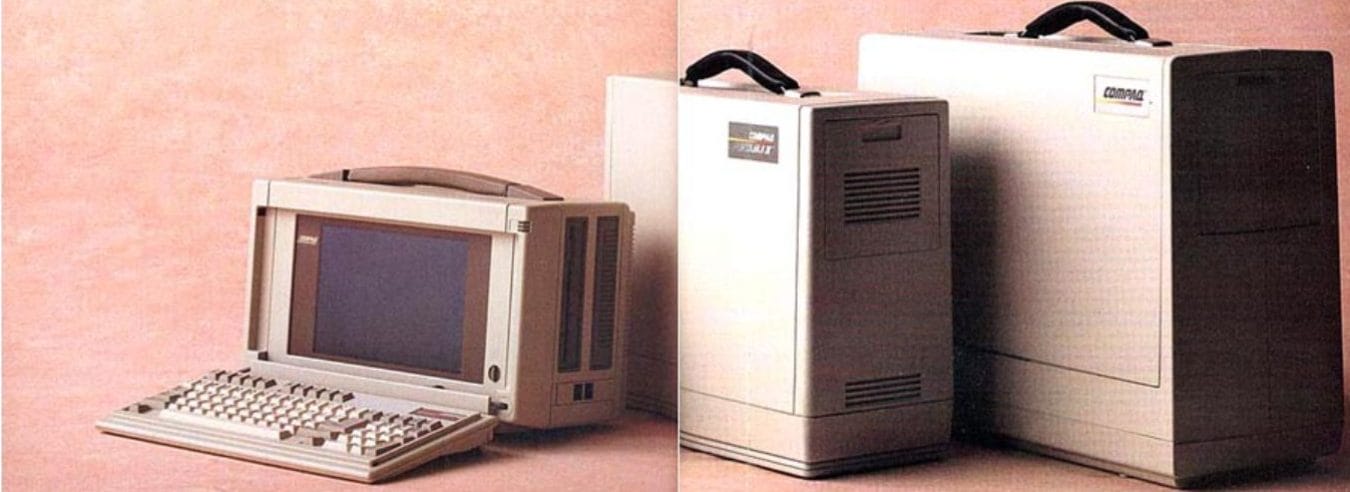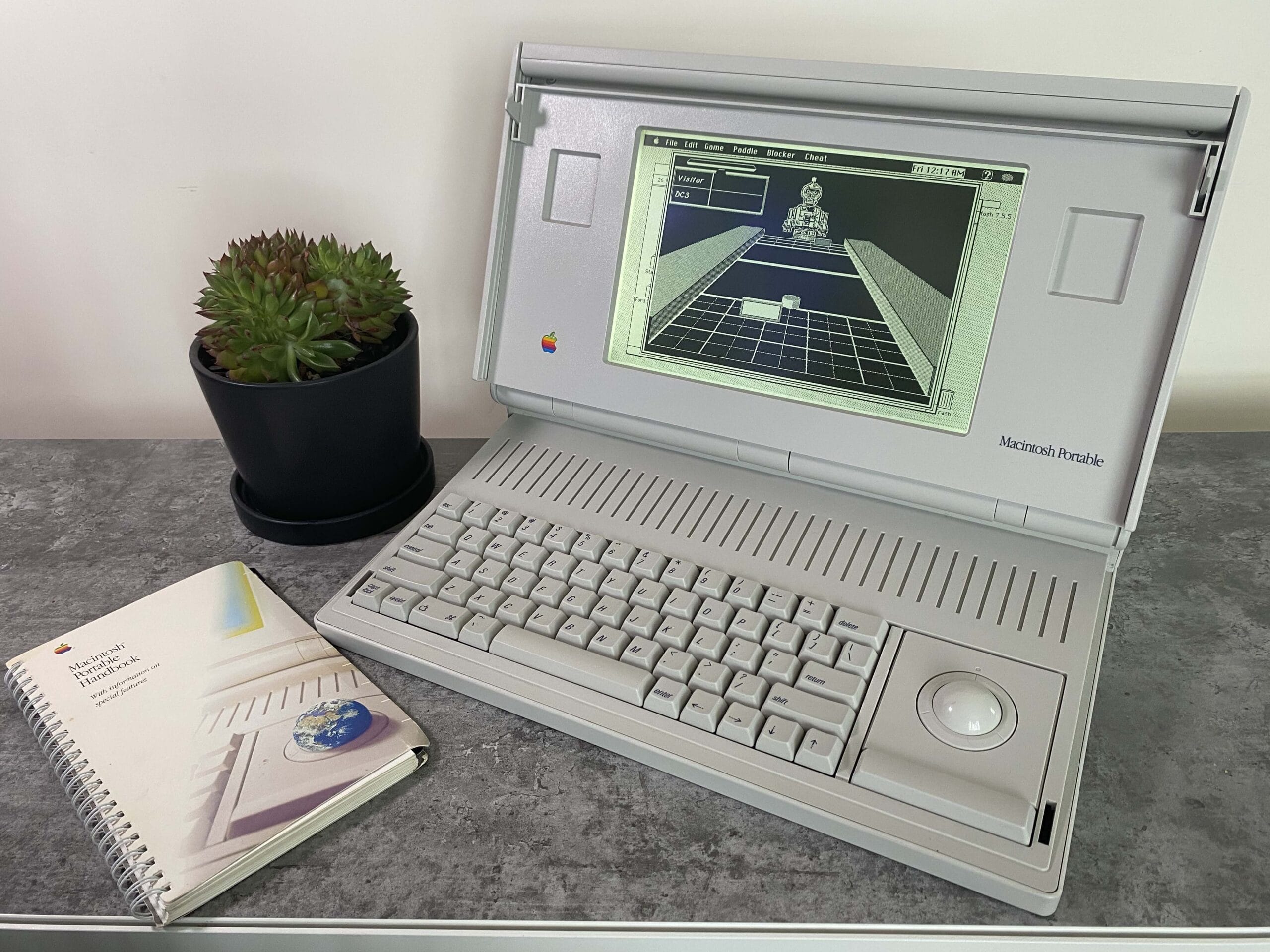The need for a Portable Macintosh
We take our MacBooks for granted today, tossing them into our bags without much of a second thought – but have you ever stopped to wonder exactly when did Apple make its first foray into mobile computing? What was the first Macintosh to run on batteries? The answer lies with the fascinating tale of the Macintosh Portable – Apple’s first (and worst) attempt to make a mobile Mac.
Our story begins in 1989. Four years have passed since Steve Jobs was forced out of Apple Computer. Apple II’s, once considered the company’s cash cow, were now close to obsolete. Despite the success with the newer Macintosh line, there was still clearly a gap in Apple’s product lineup. The rise of portable and laptop computing in the MS-DOS-based PC world had left Mac users empty-handed. They demanded a portable Macintosh and would not settle for crudely designed, third-party devices which struggled to garner mass appeal. Apple knew time was running out for them to bring the Macintosh from desk to lap.

It was, therefore, with great enthusiasm that Apple debuted the Macintosh Portable in 1989. Jean-Louis Gassée, who had been appointed by John Sculley to replace Steve Jobs as the head of Macintosh Development and President of Apple Products, was the natural choice to showcase what Apple had been working on. He introduced the Macintosh Portable on stage at a shareholder’s meeting, just as Steve Jobs had done for the original Macintosh in 1984.
In a slightly strange but nevertheless entertaining presentation, Gassée assembles a Macintosh Portable on stage without any tools. By doing so, he highlighted the Macintosh Portable’s unique construction – an entire computer held together through a complex system of plastic tabs and catches. There was not a single screw involved. Gassée at one point proudly states: “This is the most complex piece of plastic we have ever constructed” – Though I am not entirely sure why Apple thought that was a selling point to investors or consumers. I highly recommend watching the presentation for yourself – it is fascinating to watch the introduction of an Apple product that would be remembered for being one of Apple’s few flops.
An underpowered portable or an unportable laptop?
As Gassée “builds” his computer on stage, his portable Mac grows less and less portable. He pulls out a 35 cm by 40 cm (11.8 by 15.7 inch) square ABS plastic base. He adds a thick plastic chassis. And then a full-size trackball mouse. A full travel keyboard. A 3 lbs LCD module. And to top it all off – a 3 lbs, sealed lead-acid battery – similar to the kind used in cars. The result? A Macintosh that weighs almost as much as a typical A/C-driven, desktop Macintosh.

Perhaps that comparison is slightly unfair as the weight of the Macintosh SE does not include the keyboard, but the point remains: what would compel Apple to design a computer that looks like a laptop but is just as heavy as a desktop? We can partly answer that question by looking at the portable computer market in 1989.
The Portable Computer Landscape in 1989

In the late 80s, one could choose from three general types of portable computer. There were the luggables/portables that usually needed A/C power which offered near-desktop performance, but were typically heavy, bulky, and not really all that portable (despite many brands, including Apple, naming them as “portable”). Available also were battery-powered laptops which were slightly more portable, but as a trade-off, had less functionality and computing power. Finally, there were the proto-notebooks & tablets, which, whilst appearing temptingly portable, had severe limitations in functionality and computing power.

As you can see, computer shoppers at the time had quite a selection to choose from. Apple, arriving late to the portable computer market, was trying to stand out in a very crowded room. Each class of computer had distinct advantages and disadvantages and specialized towards certain customers’ needs. For example, some ultra-portable computers like the NEC Ultralite were extremely lightweight and portable but had very limited functionality (no in-built floppy drive, no hard drive, and was quite slow). Others, like the briefcase-shaped IBM P70, were not very portable at all but were as powerful and feature-rich as most desktops.

At the forefront of the portable computing revolution were the laptops. These computers were in the “Goldilocks” zone – just the right balance of power and portability. They were more powerful and functional than the ultra-portable proto-notebooks and palmtops and yet were much more portable than the A/C-powered luggables. Though the portability offered by early battery-powered laptops was a welcome development, they were notorious for quickly running out of juice. Laptop battery technology was relatively unsophisticated in 1989, and most laptops could barely manage 90 minutes of continuous use on a single charge. Technology had only advanced so far and had yet to deliver a battery-powered truly mobile portable laptop that was as feature-rich & powerful as a desktop – such a computer would not arrive until 1992 with the introduction of the IBM Thinkpad 700c.

Every aspect of this computer was comparable to its desktop contemporaries at the time.
A Portable Identity Crisis
So where does the Macintosh Portable fit in? Well, it seems that Apple decided (in true Apple fashion) that the Macintosh Portable would be in a class on its own – borrowing characteristics from both luggables and laptops in an attempt to get the best of both worlds. The limited battery life of laptops at the time likely led to Apple deciding that a long-lasting battery would be a necessity for a battery-powered Mac. Solving this “battery paranoia” (as termed by Gassée), was understandably viewed as crucial for success. Apple and Gassée, however wildly overshot the mark, and delivered a computer with 10-12 hours of battery life, made possible by using a lead-acid battery (along with a special low power, Motorola 68HC000 CPU and low-power RAM chips). The catch? The lead-acid battery alone weighed over 3 lbs, the CPU was relatively slow, and the RAM chips were expensive.

The large battery contributed greatly to the resulting bulk and weight of the computer – firmly placing the Macintosh Portable in the heavyweight (but generally high-performance) Portable / Luggable category of portable computers. Rather oddly, however, it was paired with a power-saving, low-performance CPU with low-power RAM chips typically found in highly portable laptops. This is a perplexing combination, as the low power, low-performance components are designed to be utilized in highly mobile, compact computers, where only a limited battery life is available. Yet, with the Macintosh Portable, they have been paired with a computer that is not mobile at all. Instead, they have been paired with a gigantic battery, allowing the Macintosh Portable to offer an amazing battery life that nobody can really utilize, as you can’t conveniently transport and use the Macintosh Portable in situations where you would need a battery-powered laptop (like on a tray table on an airplane). Its use is limited to desks, where a power outlet would likely be available.
In fact, the defining features of the Macintosh Portable, from its amazing-to-use full-size, full-travel keyboard, large trackball mouse, full selection of ports, internal expansion slots, and general uncompromising full Macintosh experience, compromised the one thing a portable computer should be good at: being portable. The result is a luggable trying so hard to be a laptop (in shape) but with fully uncompromised, chunky, desktop characteristics.

Whilst one might be tempted this desktop-sized laptop computer in their lap, they would quickly learn of their mistake. At 7.2 KG (16 Lbs), using the Macintosh Portable like a laptop causes waves of pain to slowly emanate from your knees (trust me, I tried). Unless you’re a bit of a sadomasochist (or, perhaps, just training your legs), it is obvious in reality this computer went from desk to desk, and not from lap to lap. Though the name is accurate – it is after all called the Macintosh Portable (as in luggable), not the Macintosh Laptop.
This confusion in identity persists to this day, with websites often referring to the Macintosh Portable as “Apple’s first laptop”, which as we can see, is just not really true.

A Marketing Misunderstanding?
Although the design philosophy of not compromising on full-size features for greater portability is obvious (and confusing), it’s evident that communicating this idea was not easy. Developing a marketing strategy for the Macintosh Portable was understandably problematic – selling a computer with a seemingly oxymoronic name must have been an immense challenge.

In its promotional video, released as a mock documentary to demonstrate the portability and features of the Macintosh Portable, showcases 3 strange users: A fireman, a police detective, and most bizarrely, an extreme-environments film producer. His segment is the best: at one point the Portable is being casually toted up a sand dune, and in another, all 16 lbs of it are being swung onto a rock for spontaneous mid-desert data entry (all the while looking suspiciously lightweight). I’d be willing to bet that Macintosh Portable in those scenes had the lead-acid battery and hard disk removed. The film producer attempts to convince us of its portability further with appropriate late 80s marketing puffery: “We had to climb 90 feet up into the jungle canopy… In addition to bringing a camera, it would be just as easy to bring the Portable Mac“. Yeah, right. Check it out for yourself below:
In later advertising, the value proposition shifted likely due to the marketing team realizing that people could actually see that the Macintosh Portable being shown in the ads. It doesn’t take a genius to tell that the Macintosh Portable is simply too big and bulky to be actually portable. The advert below pivots strategy and instead tries to sell the ease of use of Macintoshes in general. They did however still try to allude to the notion of portability by showing it being used in an airport setting, without showing the computer being moved.
Perhaps the most perplexing question, therefore, is WHY. Why did Apple manufacture a dated luggable-portable, instead of a slightly feature-compromised but more sensible and compact laptop? Surely, this would be something that Mac users really wanted? Why did they seemingly not bother with portability much, if at all? And why did Apple not know how to market what they had made? How had so much gone wrong?
Find out in Part 2: Macintosh Portable – The Blame Game >>>


